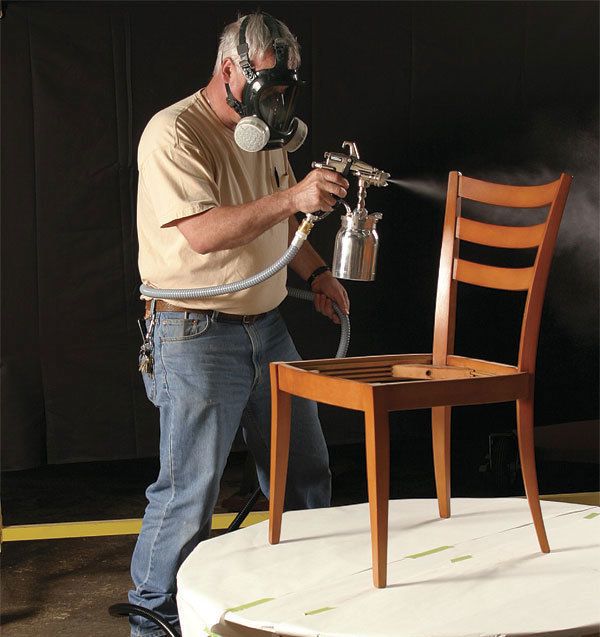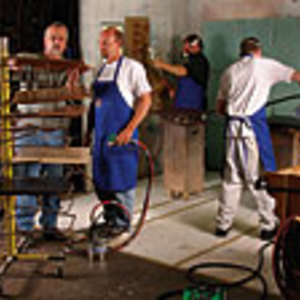Spray-Gun Choices
A fast, flawless, finish costs less than you think
Synopsis: Thinking about making the leap into spray finishing? Looking to achieve a professional, off-the-gun finish at last? It may seem that you’re facing equipment choices that are both endless and complicated. But if you understand a bit about spraying technology, things will be a lot more clear. This guide to spraying equipment explains what happens when you mix air and finish, and why you should care. It gives you the tools you need to choose between turbine and compressed-air systems. And it outlines the different ways that systems contain the finish for spraying. Then, when you’ve made your purchase and are ready to spray, it also gives tips on safety.
When professional finishers talk about an “off-the-gun finish,” they are describing a finish so smooth that it doesn’t require sanding. Achieving this state of finishing perfection requires practice and knowledge of finishes, but above all, the right equipment.
If you’ve been thinking about making the leap into spray finishing and have started to research equipment, it might seem that the choices are endless. In fact, the basic technologies are not that complicated, and they may be a lot easier to understand than some of those fancy dovetail jigs!
The two main types of spray gun are those powered by a turbine and those that run off an air compressor. I limited my search to guns that can get reasonable results when spraying a water-based finish, as most woodworkers don’t own explosion-proof spray booths and thus are not set up to spray solvent-based finishes (see “Spraying water-based finishes safely,” p. 64). Also, water-based finishes are among the most difficult to atomize, so if your gun can spray them well, it should be able to handle most solvent finishes. This requirement ruled out the $100 hardware-store spray guns, but I discovered that furniture makers can get a beautiful finish for around $500—and spend far more for inferior results. This article will help you zero in on the system that is right for you.
What happens when you mix air and finish
To understand spraying, you need to grasp two conflicting concepts: atomization and transfer efficiency. Atomization is forcing a liquid to become small, round particles; the smaller the particle, the better the look of the coating. Large particles can produce an effect known as “orange peel.” There are many reasons for this pebbly look, but poor atomization is one of the most common.
Early spray guns used air at high pressure (45 to 90 lb. per square inch, or psi) at the tip of the gun to blast the liquid finish into a fine mist of tiny particles. This produced a beautiful, smooth finish, but only about 25% of the liquid ended up on the object being sprayed. The rest missed the target or bounced off because of the high air pressure. In order to improve on this 25% transfer efficiency, high-volume, low-pressure (HVLP) guns were developed. HVLP technology reduces to a maximum of 10 psi the amount of air needed to atomize liquid. This increases the transfer efficiency to between 65% and 90%, but it comes at a price: You spray more slowly and the quality of atomization varies among the various systems.
From Fine Woodworking #194
For the full article, download the PDF below:
Fine Woodworking Recommended Products

Bahco 6-Inch Card Scraper


Diablo ‘SandNet’ Sanding Discs






















Log in or create an account to post a comment.
Sign up Log in